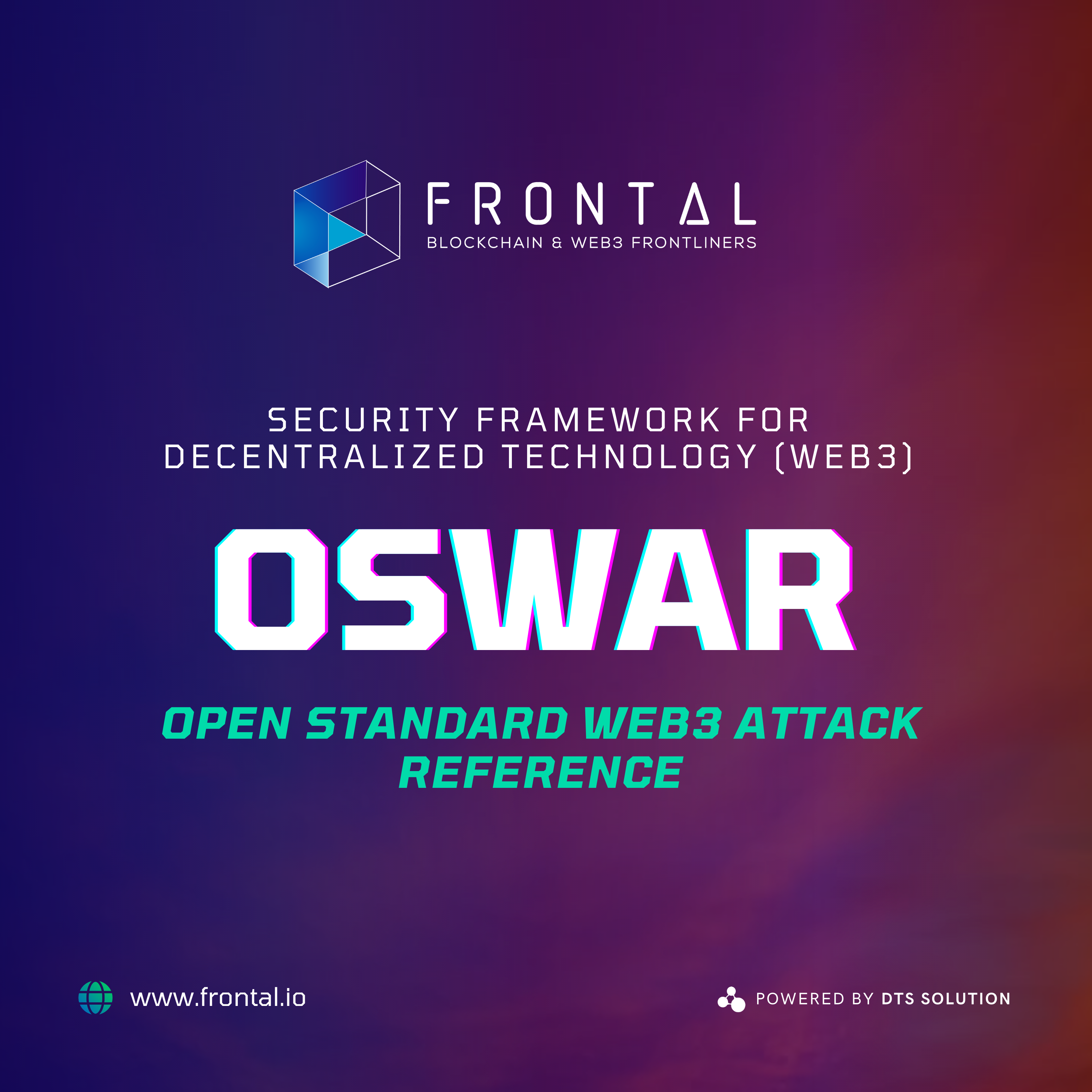OSWAR (Open Standard Web3 Attack Reference) is a comprehensive framework that identifies, categorizes, and mitigates Web3-related attacks and vulnerabilities. Inspired by the MITRE ATT&CK framework, OSWAR provides a structured, comprehensive, and actionable understanding of attacker behaviors, techniques, and vulnerabilities related to decentralized systems like blockchain platforms and decentralized applications (dApps).
- Who is OSWAR for? OSWAR is designed to cater to a diverse range of audiences, including web3 security enthusiasts, security experts, Web3 developers, researchers, and organizations involved in decentralized technologies. The framework aims to enhance understanding of Web3-related attacks and promote secure development practices across the ecosystem.
- What is the purpose of OSWAR? The primary purpose of OSWAR is to provide a comprehensive and structured reference for Web3-related attacks and vulnerabilities. By offering detailed information about potential threats, the framework assists users in adopting effective security measures, developing secure applications, and maintaining a robust decentralized ecosystem.
- How does OSWAR differ from the MITRE ATT&CK framework? While the MITRE ATT&CK framework offers a broad perspective on cybersecurity threats, covering various technologies related to “Web2,” OSWAR specifically tailors its focus to address the unique security challenges and attack vectors associated with Web3 technologies. OSWAR serves as its own unique framework, providing in-depth insights into decentralized systems such as blockchain platforms and dApps.
- How can OSWAR help Web3 developers? OSWAR offers Web3 developers a valuable resource to understand the diverse attack vectors, techniques, and vulnerabilities that can impact decentralized systems. By utilizing OSWAR as a reference, complete with actionable real-world examples, developers can learn best practices for secure development, identify potential weaknesses in their applications, and implement effective countermeasures to protect against Web3-specific threats.
- How can you contribute to OSWAR? OSWAR operates as an open standard, and contributions from the community are vital for its growth and development. Security experts, researchers, and developers can contribute by sharing their knowledge, reporting new attack vectors or vulnerabilities, and providing feedback on existing entries. Collaboration ensures that OSWAR remains up-to-date and relevant to the ever-evolving Web3 landscape.
The Need for Security Standardization in Web3
Web2, the current version of the internet, has well-established security standards, such as the MITRE ATT&CK framework. However, Web3 is still in its early stages, and no standardized security framework covers the unique challenges of decentralized systems. Decentralized systems rely on trustless networks, where trust is not placed in any single entity but distributed among the network participants. This creates new challenges that traditional security frameworks may not adequately address.
A Decentralized Application (DApp) is complex, and the infrastructure is spread across various dependencies. These can be oracles, blockchain networks, liquidity pools, hosting services, and storage solutions, all of which present numerous vulnerabilities.

Furthermore, the decentralized nature of Web3 makes it challenging to secure. Since no central authority or governance exists, anyone, including attackers, can participate in the network. Additionally, the distributed nature of Web3 also makes it challenging to identify and mitigate security threats. Each DApp is different, and each blockchain has unique structures. This also makes it harder to creatbe one unified security framework. However, this is by noe means impossible, and the need to do so becomes greater and greater as time flies by.
The lack of security standardization in Web3 creates a risk of inconsistent security practices. This can lead to less understanding, increased attack surface, and increased vulnerabilities, resulting in devastating attacks. Recent high-profile attacks, such as the Yearn Finance hack, highlight the need for standardized security practices in Web3.
The OSWAR Framework
To address the need for security standardization in Web3, the Open Standard Web3 Attack Reference (OSWAR) framework was developed. Inspired by the MITRE ATT&CK framework, OSWAR is a comprehensive framework that identifies, categorizes, and mitigates Web3-related attacks and vulnerabilities.
OSWAR provides a structured, comprehensive, and actionable understanding of attacker behaviors, techniques, and vulnerabilities related to decentralized systems like blockchain platforms and decentralized applications (dApps). The framework is designed to be flexible and can be customized to fit the specific needs of individual organizations.
OSWAR covers categories such as Initial Access, Execution, Persistence, Privilege Escalation, Defense Evasion, Credential Access, Lateral Movement, Command and Control, Exfiltration, and Impact. Each category has a set of techniques and sub-techniques that cover a range of Web3-specific security threats. In addition to that, we have “vertical” sections which divide the sub-techniques into more common categories like Oracle / AMM, smart contract vulnerabilities, and so forth.

Benefits of OSWAR
The OSWAR framework provides several benefits to Web3 systems, including uniformity in security practices, common language, and common mitigation strategies. OSWAR is by no means a one-man project. It is created to be open-source and a co-operation between any interested participant from Web2 to Web3 to increase confidence in Web3 and fill the missing gap.
The OSWAR framework helps organizations identify and mitigate security threats before they become serious. The structured approach to security allows organizations to implement standardized security practices across all their systems. This results in uniformity in security practices and reduces the risk of inconsistent practices that can lead to increased vulnerabilities.
Additionally, the framework helps to reduce the attack surface of Web3 systems. By identifying potential attack vectors and techniques, organizations can take proactive measures to mitigate them before attackers can exploit them. This can help to reduce the overall risk of Web3 systems.
The OSWAR framework also increases confidence in Web3 technology by providing a standardized approach to security. As the use of Web3 technology continues to grow, it is essential to have a unified approach to security that can be applied across all Web3 systems. This can help to build trust among users and investors, which is crucial for long-term success. Furthermore, the OSWAR framework is designed to be flexible and customizable, which allows organizations to tailor their security practices to their specific needs. This can help organizations to take a proactive approach to security and identify potential threats before they become significant issues.

